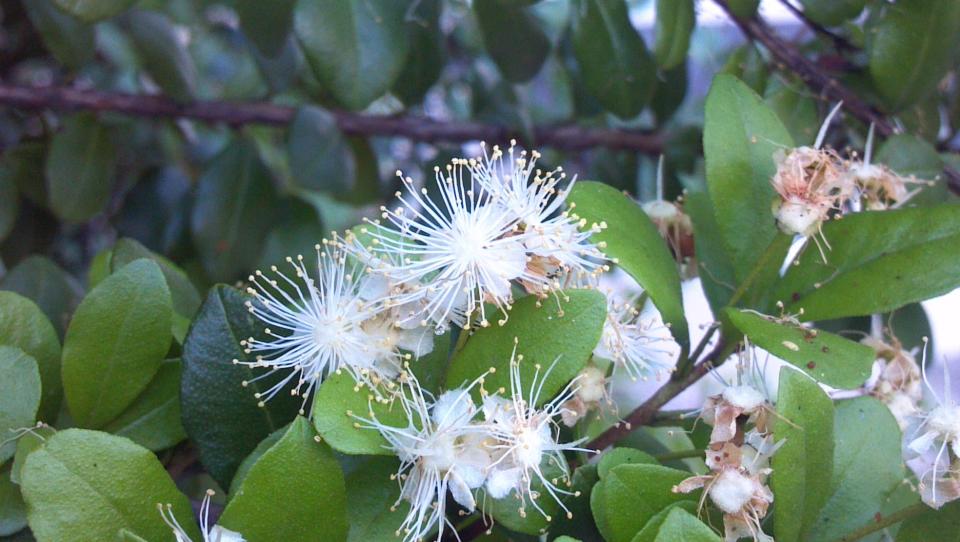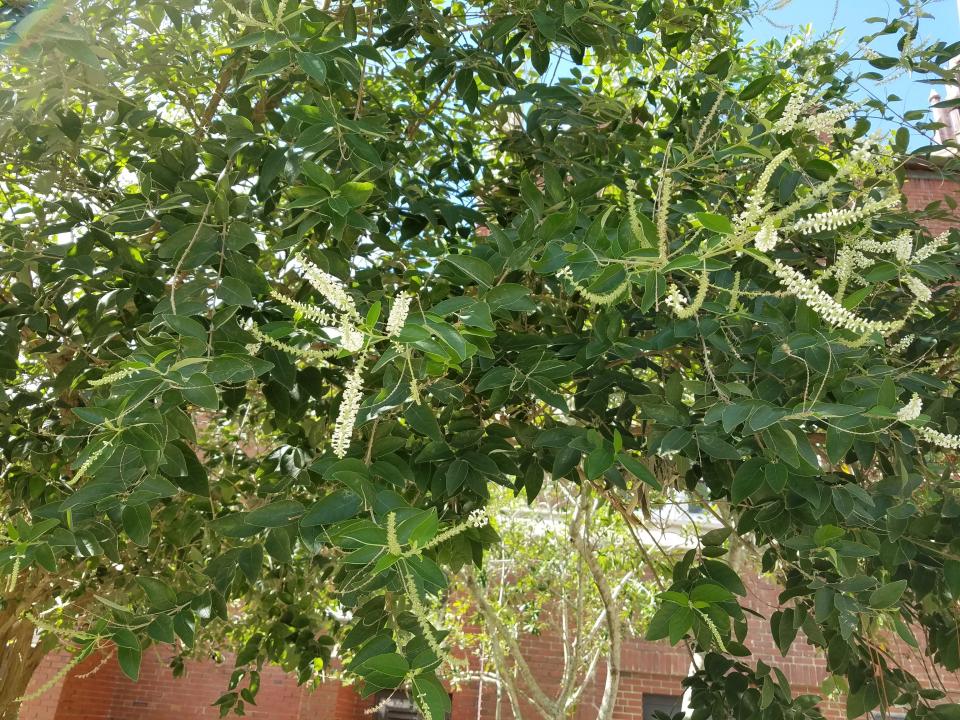These sweet flowers will fill your yard with fragrance | Sally Scalera
If you enjoy aromatherapy, why not add fragrant plants to your porch, landscape or both? They come in various flower colors, amounts of fragrance (ranging from light to strong), and blooming seasons.
The first set of fragrant plants are native, which is important because they attract and support our native insects. Native insects perform many important functions, such as controlling insect and plant pests, pollinating flowers, etc. Here are a few fragrant native plants and some information about them.
Sweet Acacia (Vachellia farnesiana) is a small tree that is very fragrant and produces small yellow pom-pom flowers. It grows 15 to 25 feet tall with a 15- to 25-foot spread. The flowers are produced year-round, and this tree prefers a location in full sun. Sweet acacia is a slow-growing tree with small thorns on the trunk while it’s young. However, this tree may not be a good choice for people with allergies.
Fringetree (Chionanthus virginicus) grows 12 to 20 feet tall with a 10- to 15-foot spread. The white flowers are fragrant and are produced in the spring. This small tree also attracts birds because fruit is produced after the flowers.
Fiddlewood (Citharexylum spinosum) produces fragrant white flowers from the spring through the fall. This plant can get 8 to 10 feet tall with a 5- to 12-foot spread. Find a location that receives full sun to partial shade, and if you live on the beach, that’s fine, because it has a high salt spray and drought tolerance and prefers alkaline soils. The flowers attract pollinators; many types of wildlife, including birds, eat the berries.

Simpson’s stopper (Myricanthes fragrans) can be grown as an understory tree or a shrub growing 5 to 20 feet tall with a 3- to15-foot spread. It attracts birds and bees and produces gorgeous flowers that smell wonderful.
Many non-native plants are also fragrant. Here are just a few to consider planting in your yard.
Gardenia (Gardenia jasminoides) has a strong fragrance to go with its pure white flowers. This shrub can grow 6 to 10 feet tall with an equal spread. Gardenias like lots of sunlight, though they do fine in partial shade. The flowers are produced in the spring. Pruning should be done soon after flowering has stopped. Gardenias will do best in soils that contain plenty of organic matter.
Arabian jasmine (Jasminum sambac) is an evergreen shrub that can grow up to 10 feet tall if allowed. Prune the shrub regularly since it blooms on new wood. Plant in locations that receive full sun to partial shade. The flowers produce a heavy fragrance and are used in making perfumes and as a flavoring in tea. The following cultivars are available: ‘Belle of India,’ ‘Grand Duke of Tuscany,’ and ‘Maid of Orleans.’

Sweet almond (Aloysia virgata) can grow to 15 feet tall and wide as a tree or shrub and grows in full sun to partial shade. The white flowers produce a wonderfully sweet scent, and the plant is very drought-tolerant. Prune the plant after each bloom cycle to create a dense growth habit. The flowers will attract butterflies and support insects also.
Sweet Osmanthus (Osmanthus fragrans) has a delicate fragrance, which means that a group of these shrubs planted together will not be overwhelming. Sweet olive is a very upright, airy plant grown in partial shade, but will produce dense growth in full sun, typically growing 10 to 12 feet tall with only an 8-foot spread. This plant produces numerous small white flowers from October through March.
White butterfly ginger (Hedychium coronarium) spreads by rhizomes and can grow two to three feet tall. The fragrant white flowers are borne at the top of each leaf stalk. After the stalk has flowered and turned yellow, cut it at ground level. Chop the stalk up into small pieces and lie them on the ground, around the base of the plant to allow the organic matter to return to the soil. This tropical-looking plant will look its best in partially shady locations and can easily be grown in containers.
Rangoon Creeper (Combretum indicum) is a large-growing shrubby vine that produces star-shaped flowers that come in various colors ranging from white to deep red. When the flowers open, they are white, turn pink, and finally red. The fragrance is sweet and fruity and will certainly get your attention if you get a whiff. The foliage is also an attractive glossy, deep green. This vine can get quite tall and climb a tree if allowed.
Confederate jasmine (Trachelospermum jasminoides) is an evergreen vine with a strong fragrance and attractive white flowers. This vine blooms in the summer, does well in full sun to partial shade, and will climb high into trees, so keep that in mind when choosing its location.
To receive information on how to inoculate the plants with beneficial soil microbes when planting and a liquid inoculant after establishment, email the UF/IFAS Extension Brevard County Master Gardeners at if-svc-BrevardMG1@ifas.ufl.edu. By establishing life in the soil, which is how nature grows plants in undisturbed wild areas, your plants will be in control of their destiny, healthy soil will be created, and water quality will be protected. Doesn’t that sound like a win-win?
If you have been thinking of adding a new plant to the landscape or a potted plant for your porch, why not consider one that also provides fragrance? Aromatherapy is good for the soul and uplifting for your spirit. You have an entire weekend before you, so decide which one sounds best and get planting.
Sally Scalera is an urban horticulture agent and master gardener coordinator for the University of Florida’s Institute of Food and Agriculture Sciences. Email her at sasc@ufl.edu.
More by Sally
Rain barrels conserve water and protect your property | Sally Scalera
August gardening calendar: What to plant in Brevard this month | Sally Scalera
Bring summer color inside by growing cut flowers in your garden | Sally Scalera
This article originally appeared on Florida Today: These flowers will add sweet fragrance to your Brevard yard

